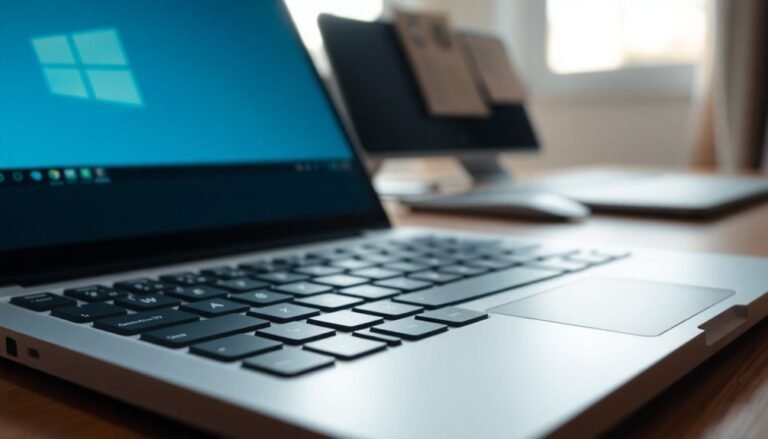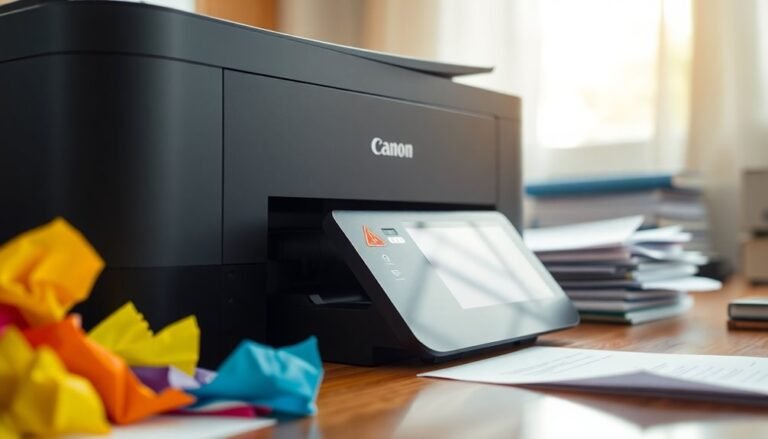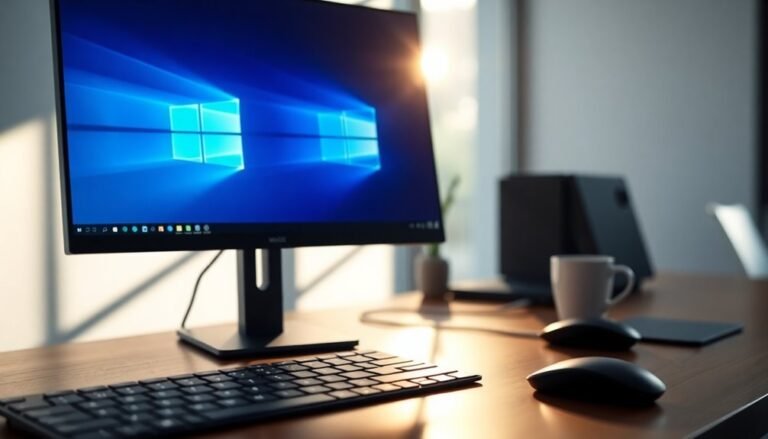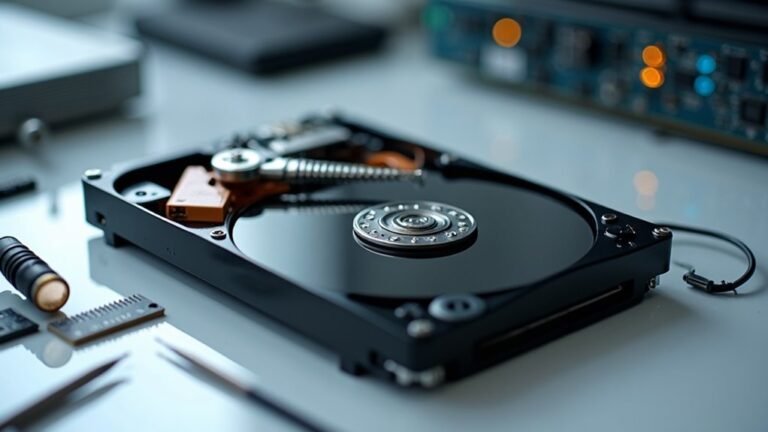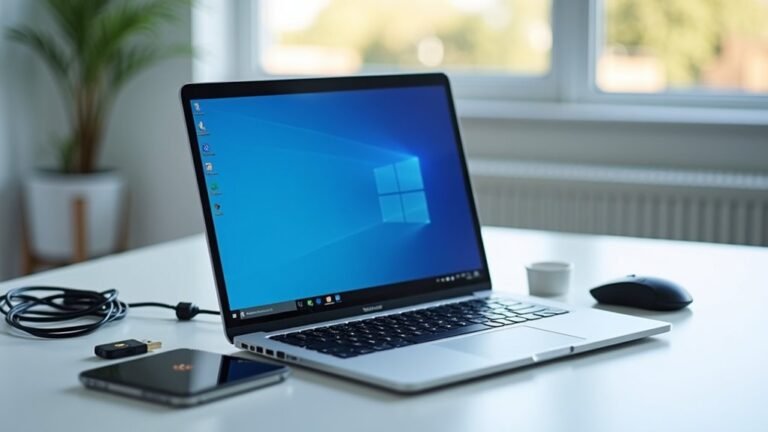Dell Laptop Slow Startup Windows 10: Fix Dell Boot Time Issues
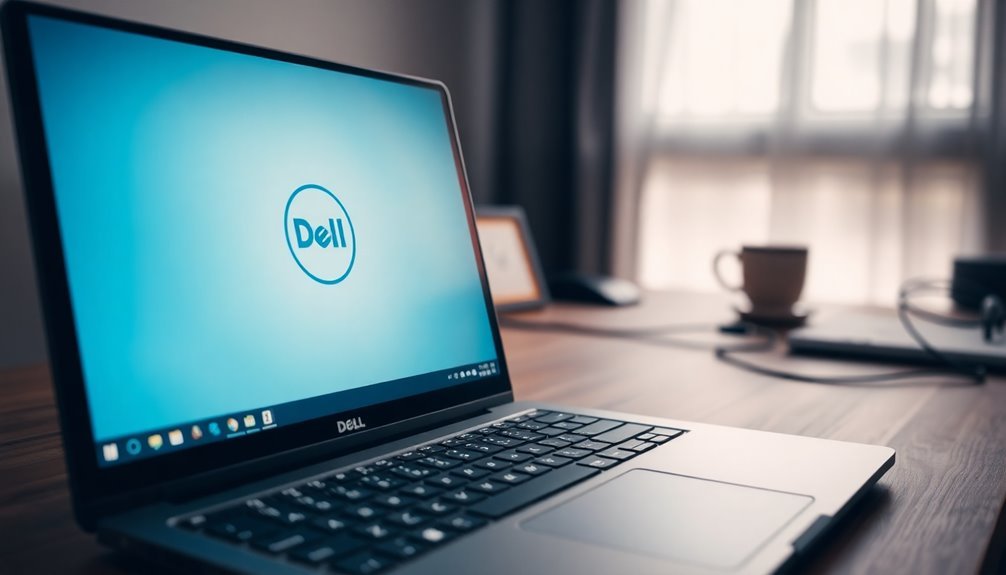
If your Dell laptop’s startup is slow on Windows 10, start by disabling unnecessary startup programs in Task Manager. Make sure Windows and drivers are up to date.
Run a malware scan and perform a disk cleanup to improve performance. Use Dell SupportAssist to check for any hardware issues.
Consider upgrading to an SSD or increasing your RAM for better boot times. Need more ways to get your Dell booting fast and smooth? There are further steps you can try next.
Common Reasons for Slow Boot on Dell Laptops
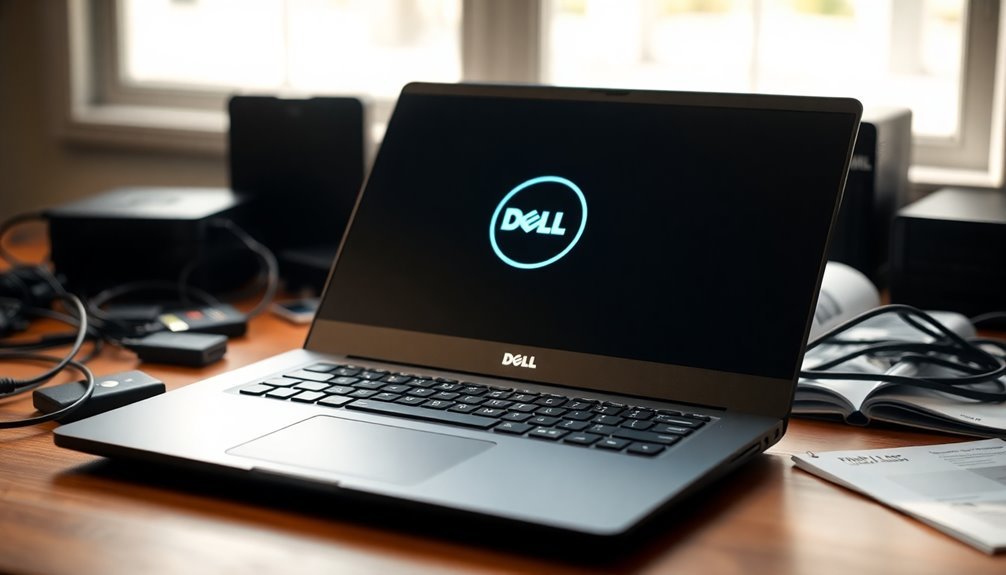
If your Dell laptop is experiencing slow boot times, several common issues could be causing delays. One major factor is hardware performance: older or slower hard drives, especially 5400 RPM HDDs, can significantly increase startup time. Limited RAM, such as 4GB or less, also restricts multitasking capabilities and slows down the boot process. Additionally, failing hard drives with bad sectors or low free space on the C: drive can further degrade performance.
On the software side, corrupt Windows system files, oversized user profiles, and interrupted or pending Windows updates often lead to longer startup times on Dell laptops. Misconfigured power settings and improper shutdowns may cause Windows to take extra time recovering during boot. Turning on secure boot in BIOS can sometimes resolve persistent boot issues immediately.
Malware infections, aggressive antivirus scans, and unwanted startup programs are also common causes of slow boot performance.
Finally, accumulated junk files, fragmented drives, and leftover system logs can reduce overall system responsiveness. To optimize your Dell laptop’s boot speed, systematically check hardware health, clean up unnecessary files, update system drivers, scan for malware, and manage startup applications. Following these steps can significantly improve startup times and overall performance on your Dell laptop.
Disabling Unnecessary Startup Programs
How to Disable Unnecessary Startup Programs to Speed Up Your Dell Laptop Boot Time
If your Dell laptop is experiencing slow boot times, one of the most effective solutions is to disable unnecessary startup programs. These programs run automatically when Windows starts, often consuming valuable CPU and disk resources that can slow down your system.
Follow these simple steps to manage startup programs and improve your Dell laptop’s performance:
- Open Task Manager by pressing Ctrl + Shift + Esc on your keyboard.
- Click on the Startup tab to see a list of apps that launch during startup.
- Review the impact column, which categorizes programs as High, Medium, or Low impact based on their resource usage.
- Right-click on any high or medium impact program that you don’t need immediately after boot, and select “Disable.”
- Keep only essential applications enabled, such as antivirus or security software, to maintain system protection.
Alternatively, you can manage startup apps via Windows Settings by navigating to Settings > Apps > Startup. Here, you can toggle startup programs on or off with ease.
For advanced users, use the Run dialog (press Win + R), then type “shell:startup” or “shell:common startup” to open the folders containing startup shortcuts. You can manually add or remove program shortcuts here to customize your startup experience.
Managing startup programs can enhance boot times and overall system performance, so it’s a good idea to periodically review which apps are set to run at startup and disable any that are not essential.
Regularly reviewing and disabling unnecessary startup programs on your Dell laptop can significantly reduce boot time and enhance overall system responsiveness.
If you’re unsure about a program, research it online or create a system restore point before making changes.
Optimize your Dell laptop’s startup today by disabling unwanted programs and enjoy faster boot times and improved performance!
Managing the Fast Startup Feature in Windows 10
How to Manage the Fast Startup Feature in Windows 10 for Faster Dell Laptop Boot Times
One essential setting that impacts your Dell laptop’s startup speed is the Fast Startup feature in Windows 10. Fast Startup helps your system boot faster by combining shutdown and hibernation processes, saving the Windows kernel and drivers to a hibernation file. This reduces the time it takes for your Dell laptop to power on after a shutdown.
To enable or disable Fast Startup on your Windows 10 Dell laptop, follow these steps:
- Open the Control Panel.
- Navigate to Power Options.
- Click on “Choose what the power buttons do” from the left sidebar.
- Select “Change settings that are currently unavailable” to unlock the Fast Startup option.
- Locate the “Turn on fast startup (recommended)” checkbox.
- Check this box to enable Fast Startup or uncheck it to disable the feature.
- Save your changes.
Note: You need administrative privileges to modify this setting.
Why Enable Fast Startup?
Enabling Fast Startup is ideal if you want quicker boot times and your system isn’t experiencing update failures or hardware recognition issues. It significantly speeds up the startup process after shutdown, making your Dell laptop ready to use faster.
When to Disable Fast Startup?
If you encounter problems such as Windows update failures, issues with dual-boot configurations, or hardware changes not being detected, consider disabling Fast Startup.
Also, keep in mind that Fast Startup affects only shutdown and startup cycles, not restart times.
Freeing Up Disk Space and Expanding the C Drive
How to Free Up Disk Space and Expand the C Drive on Your Dell Laptop
Optimize your Dell laptop’s performance by freeing up disk space and expanding the C drive. Follow these expert steps to speed up boot times and enhance overall system efficiency.
1. Run Windows Disk Cleanup Tool
Start by using the built-in Windows Disk Cleanup utility to delete temporary files, system cache, and outdated Windows installation files. This quick step can recover several gigabytes of space.
2. Enable Storage Sense in Windows 10
Turn on Storage Sense to automatically remove junk files and manage disk space regularly. This feature helps keep your system clutter-free without manual intervention.
3. Clear Downloads Folder and Browser Cache
Manually empty your Downloads folder and clear browser caches to free up additional storage. These files often accumulate unnoticed and consume significant disk space.
4. Disable Hibernation Mode
Hibernation files can take up space equal to about 75% of your RAM. Disable hibernation mode to delete this large file and reclaim valuable storage on your C drive.
5. Uninstall Unnecessary Applications
Navigate to the Apps & Features menu to remove large or rarely used programs. Uninstalling unneeded software frees up space and can improve system responsiveness.
6. Move Personal Folders to Another Drive
Reduce C drive usage by relocating Documents, Pictures, and other personal folders to a different partition or an external drive. Using cloud storage solutions like OneDrive also helps offload files while keeping them accessible.
7. Expand the C Drive Using Disk Management
Open Disk Management to check for unallocated space adjacent to your C drive. If available, extend the C partition to increase its storage capacity. You may need to resize other partitions to make room.
By following these proven methods to free up disk space and expand your C drive, you can enhance your Dell laptop’s speed, boot time, and overall performance.
Regular maintenance ensures your system runs smoothly and efficiently.
Running Dell SupportAssist Hardware Diagnostics
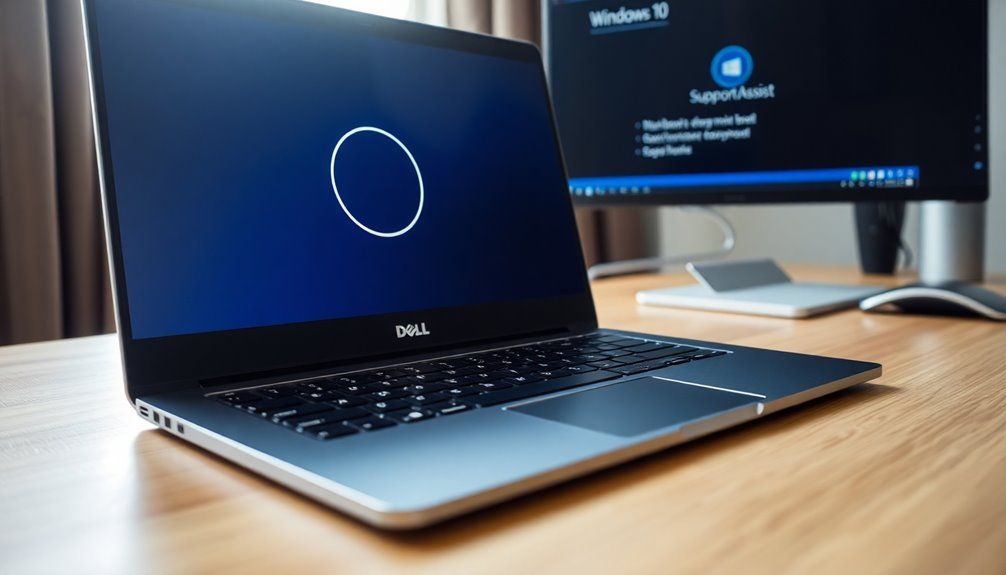
How to Diagnose Slow Startup on Dell Laptops Using SupportAssist Hardware Diagnostics
If your Dell laptop is experiencing slow startup times, running Dell SupportAssist Hardware Diagnostics can help identify hardware issues causing the delay. This built-in diagnostic tool thoroughly scans critical hardware components to quickly detect problems affecting boot speed.
Follow these step-by-step instructions to use Dell SupportAssist effectively:
- Launch Dell SupportAssist from the Windows Start menu. If SupportAssist isn’t installed, download it directly from the official Dell website to ensure you have the latest version.
- Start a hardware scan by selecting “Run All” tests or choose specific diagnostics such as Quick Scan, Stress Test, or Full Scan based on your troubleshooting needs.
- Analyze the scan results once testing completes. Pay close attention to any error codes or warnings related to your hard drives, SSDs, or memory modules, as these components frequently impact startup performance.
- Use Pre-Boot ePSA Diagnostics by pressing the F12 key during startup if Windows fails to load or if SupportAssist can’t run within the operating system.
Dell SupportAssist automatically logs diagnostic results, making it easier for you or Dell technical support to identify and resolve hardware faults.
Fixing detected issues like failing storage drives or faulty RAM can significantly improve your Dell laptop’s boot times and overall performance.
Optimize your Dell laptop’s startup speed today by using Dell SupportAssist Hardware Diagnostics for a comprehensive hardware health check.
Updating Drivers, BIOS, and Windows
Optimize Your Dell Laptop Boot Speed by Updating Drivers, BIOS, and Windows
Slow startup times on your Dell laptop can often be traced to outdated software rather than hardware issues. To improve boot speed, start by updating your device drivers. Outdated graphics, storage, or chipset drivers are common culprits behind delayed startups.
Use Dell SupportAssist or visit the official Dell website to enter your laptop model and download the latest drivers. You can also verify driver versions through Device Manager to ensure they’re up to date.
Next, check for BIOS updates on Dell’s official support page or use Dell Update utilities. Updating your BIOS can fix firmware bugs and optimize the boot sequence, significantly enhancing startup performance.
Always utilize official Dell tools for BIOS updates and create a system restore point before proceeding to safeguard your data. After the update, reset BIOS settings to optimized defaults to maximize boot speed improvements.
Lastly, make sure your Windows 10 operating system is fully updated by running Windows Update regularly. Installing the latest Windows updates addresses security vulnerabilities, improves background process efficiency, and resolves boot-related issues that slow down startup times.
Remember to back up important data before updating and schedule updates during periods of low activity to minimize disruption.
By regularly updating your Dell laptop’s drivers, BIOS, and Windows OS, you can ensure faster startup times, improved system stability, and a smoother overall user experience.
Stay proactive with these maintenance steps to keep your Dell laptop running at peak performance.
Detecting and Removing Malware
How to Detect and Remove Malware on Your Dell Laptop for Faster Startup
If your Dell laptop is experiencing slow startup times despite installing all the latest software updates, malware could be the culprit.
Windows 10 comes equipped with Windows Defender, a powerful built-in antivirus tool that provides real-time protection and comprehensive scanning options to detect and remove malware effectively.
Follow these simple steps to scan your Dell laptop for malware and remove any threats:
- Open Windows Security on Your Dell Laptop: Click the Start menu, type “Windows Security” in the search bar, and open the app.
- Run a Full Virus Scan: Navigate to “Virus & threat protection,” select “Scan options,” and choose “Full scan.” This scan uses both signature-based detection and heuristic analysis to identify malware.
- Review Detected Threats and Take Action: If malware is found, Windows Security will prompt you to quarantine or remove the threats. Follow the recommended actions to ensure your Dell laptop is fully protected.
- Set Up Scheduled Scans and Updates: Regularly schedule scans and keep virus definitions up to date to maintain ongoing protection against malware.
By regularly using Windows Defender to detect and remove malware, you can improve your Dell laptop’s startup speed and overall performance.
For more tips on optimizing your Dell laptop, visit our website regularly.
Using System Optimization Tools
How to Speed Up Your Dell Laptop Startup with System Optimization Tools
If your Dell laptop is experiencing slow startup times and malware has been ruled out, optimizing system-level settings is the next crucial step. Start by using Dell Precision Optimizer (DPO) or Dell Optimizer—powerful tools designed to enhance your system’s boot performance. These utilities automatically adjust system configurations, update BIOS, firmware, and essential drivers, helping to resolve compatibility issues that can delay startup.
Leverage real-time resource monitoring within DPO or Dell Optimizer to identify CPU, memory, or storage bottlenecks that impact boot speed. If you notice high resource usage, consult the Workload Analysis reports and follow smart notifications that pinpoint resource spikes for actionable fixes.
Next, ensure all critical drivers—including graphics, storage, and chipset drivers—are up to date by using Dell’s automated update tools. Keeping drivers current prevents outdated or incompatible software from slowing your boot process.
Additionally, use Process Explorer or DPO’s analytics features to disable unnecessary startup programs, reducing system strain and improving boot times.
For optimal results, regularly apply recommended system updates and review detailed system performance reports. By following these expert tips, you can maintain fast, efficient boot performance on your Dell laptop without the hassle of manual troubleshooting.
When to Reinstall Windows 10 or Replace Hardware
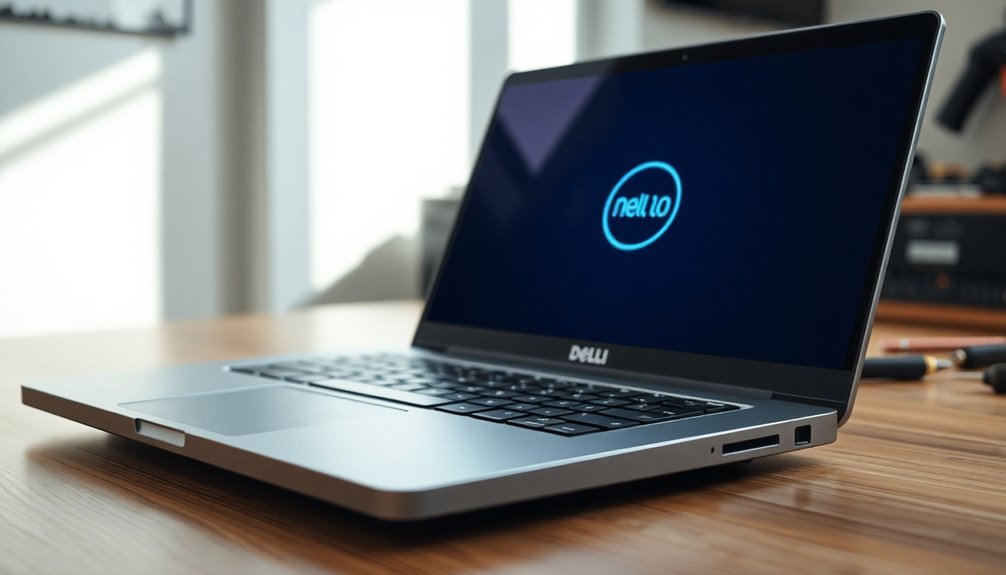
When to Reinstall Windows 10 or Replace Hardware on Your Dell Laptop
If your Dell laptop is experiencing slow startup issues despite thorough software optimization and malware removal, it’s time to consider more decisive solutions.
Slow boot times can indicate deeper problems such as system corruption, failing hardware, or persistent malware infections. To get your Dell laptop running smoothly again, you need to determine whether a clean Windows 10 reinstall or hardware replacement is the best option.
Watch out for these key signs:
- Unrepairable System Errors: Persistent slow startup, frequent system crashes, or blue screen errors that can’t be fixed using Windows tools like SFC (System File Checker) or DISM (Deployment Imaging Service and Management Tool).
- Repeated Windows Update Failures: If Windows updates continually fail or cause system instability, this could signal serious underlying issues.
- Hardware Warning Signs: Look for hard drive errors, SMART warnings, overheating problems, or issues detected with RAM or CPU during hardware diagnostics.
- Severe Malware Infection: Malware or ransomware that remains after multiple cleanup attempts and has compromised critical system files.
Before you proceed with reinstalling Windows 10 or replacing hardware components, make sure to back up all important data, perform comprehensive hardware diagnostics, and prepare Windows installation media.
Taking these steps will ensure a smooth recovery or upgrade process and help restore your Dell laptop’s performance.
Optimize your Dell laptop’s performance today by identifying when to reinstall Windows 10 or replace faulty hardware!
Frequently Asked Questions
Can External Devices Cause Slow Startup on Dell Laptops?
Yes, external devices can cause slow startup. Disconnect all peripherals, then restart your laptop. If startup improves, reconnect devices one by one. Update or reinstall drivers, firmware, and BIOS to resolve potential conflicts and optimize boot performance.
Does Using a Docking Station Affect Boot Time?
Yes, using a docking station can affect boot time. You’ll want to test with and without the dock, check BIOS boot settings, update firmware, and disconnect peripherals to isolate whether the dock or connected devices are delaying startup.
Will Upgrading From HDD to SSD Speed up Boot?
Yes, upgrading from HDD to SSD will speed up boot dramatically. You’ll see startup times drop from about 40 seconds to 15 seconds. Just clone your OS, install the SSD, and enjoy consistently faster, quieter boots.
How Does Dual-Booting Impact Dell Laptop Startup Speed?
Dual-booting adds a brief boot menu delay, but won’t slow actual OS startup unless the drive’s nearly full or the bootloader’s misconfigured. You should check disk space and verify bootloader settings are correct to keep startup fast.
Can BIOS Settings Customization Improve Dell Boot Performance?
Yes, you can improve boot performance by customizing BIOS settings. Update the BIOS, enable performance modes, set SATA to AHCI, optimize memory and CPU options, and disable unused devices. Always back up data before making changes.
Conclusion
By tackling slow boot issues step-by-step, you’ll notice real improvements—especially since studies show that nearly 40% of Windows 10 users deal with slow startup at some point. Start by disabling unnecessary startup apps, check your disk space, and update your drivers. Don’t forget to run Dell SupportAssist diagnostics for hardware checks. If problems persist, consider a Windows reinstall or hardware upgrade. With the right approach, you can get your Dell laptop booting up quickly again.
